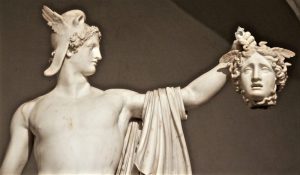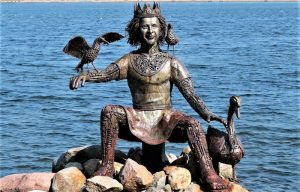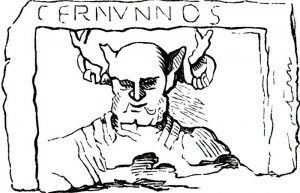Cosmogony
The term cosmogony refers to the different myths that explain the origin of life and the world. Also, according to the definition given by the dictionary of the Royal Spanish Academy, the word could refer to the theory of science that focuses on the birth and evolution of the universe, however, the most common use given to the word, in any case, is linked to a series of mythical stories. Within it, myths and legends form stories in which the gods intertwine in different battles, struggles, and fights that finally give rise to the universe. These types of narrations occurred mainly in Sumerian and Egyptian mythology. There are many types of cosmogonies, which have been developed throughout history by many types of cultures. Generally, each of these cosmogonies have as common origin chaos, whose elements are then grouped and ordered thanks to the intervention of supernatural forces or divinities.
What is cosmogony?
Cosmogony is a series of mythical stories and narratives that refer to the theory of birth and the creation of the universe through battles, struggles and myths in which the gods clashed with each other producing the creation of the world.
Etymology
This word, in its etymology, comes from the Greek “κοσμογονια” or kosmogonia, composed of “κοσμος” or kosmos, which has as meaning universe and “γονος” or gonos which means generation.
What cosmogony studies?
Cosmology is a science that studies the origin and evolution of galaxies and star clusters, to determine the age of the Universe based on a set of mythical, religious, philosophical and scientific theories about the origin of the universe. The term cosmogony, gives greater emphasis to the theoretical understanding of the beginning of the world, which, according to the knowledge and theories accepted today, is closely related to the theory of the Big Bang.
Characteristics
- It contains a large number of myths that contradict each other and that change with the course of civilizations.
- It contains many superstitions and assimilation of mythical and divine
- Cosmogonies had a very good acceptance within Egypt and were used to understand and express the multiplicity of divine creative power.
- Through cosmogony we were able to go back to a moment of pre-existence or original chaos, in which the world was not yet formed.
- Cosmogony seeks the way to establish a reality, through the perception of the universe, space and the origin of gods, humanity and the natural elements it contains.
- All religions have a cosmogony that can be identified with a process of creation or emanation.
- The word refers to the birth of the world.
- In early human civilizations cosmogony sought to explain terrestrial and space phenomena through myths.
Cosmogony of Greek culture
It was composed of a group of stories involving beliefs and rites of the Hellenic civilization regarding the origin of the universe and man. It reached its peak with the appearance of the Theogony of Hesiod, which was the main source of inspiration for Hellenic mythology, and the poems of the Iliad and Odyssey. For the Greeks, at the beginning of the world everything was a chaos within a space in which the earth originated as a chamber for the entities, the underworld that was beneath the earth, the beginning, which fostered the interaction between the components of matter. Out of that chaos arose night (Nix) and darkness (Erebo), and when they united light (Ether) and day (Hemera) were created.
Cosmogony of Chinese culture
The conception that existed in China during antiquity is explained according to the theory of Kai t’ien recorded in the “Chou pei suan ching” (a treatise that was written around the 4th century BC). Kai t’ien asserted in his theory that the sky and the earth were completely flat and that both were separated by a distance of 80,000 li (one li is equivalent to half a kilometer), he also asserted that the Sun had a diameter of 1,250 li and moved circularly in the sky.
Christian cosmogony
For Christians, the origin of the world is present in Genesis, which is the first book of the Bible, and in which it is related how the god Yahweh began to create the world “in a beginning”. In the original text of the Bible there is no explicit mention of a process of creation from nothing. Creation is a process that takes place by separation: the earth from the heavens, the earth from the waters, the light from the darkness. This means that, one proceeds by separation of components starting from the primeval chaos.
Mesoamerican cosmogony
In Mesoamerican culture, the main cosmogonic story is The Popol Vuh, which explains that when creation began and heaven and earth were formed, the world was divided into four equal parts. It narrates that a measuring rope was brought and extended in the sky and in the earth, in the four angles, in the four corners of the cosmos. This division that was made in the universe is the most deeply rooted thought that the towns in Mesoamerica have and used it to locate themselves in space and to give orientation and guidance to their towns and cities.
How to cite this article?
Briceño V., Gabriela. (2019). Cosmogony. Recovered on 23 February, 2024, de Euston96: https://www.euston96.com/en/cosmogony/










